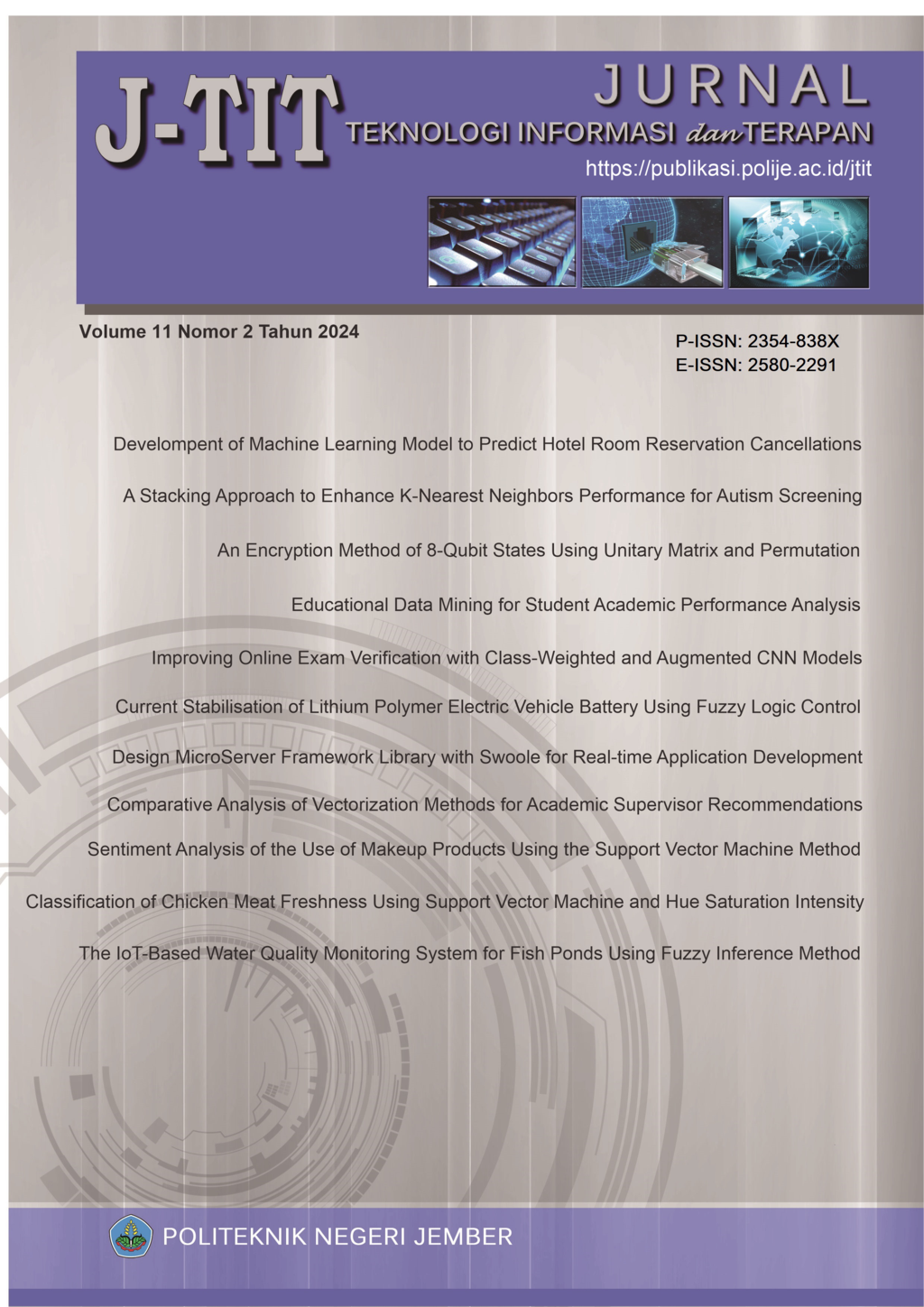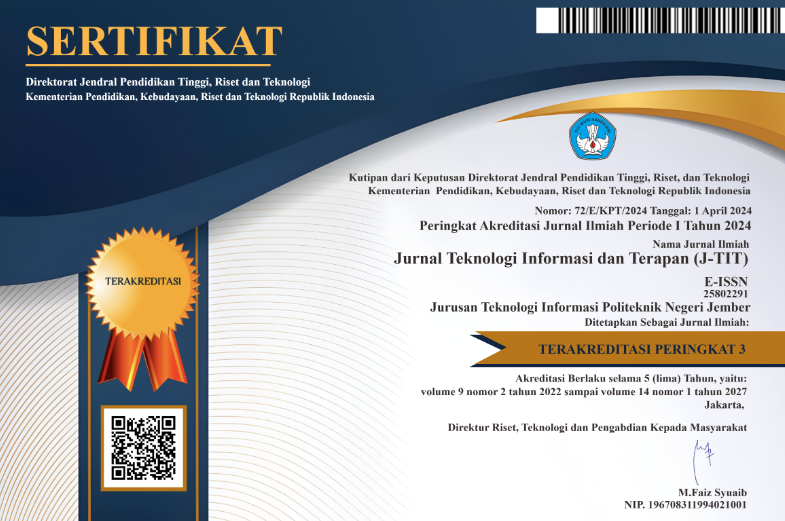IoT-Based Water Quality Monitoring System for Fish Ponds Using Fuzzy Inference Method
Abstract
This study uses the fuzzy inference method to develop an Internet of Things (IoT) system to monitor fish pond water quality. This system utilizes pH, Total Dissolved Solids (TDS), and temperature sensors to measure water quality parameters for fish health. Although many previous studies have discussed water quality monitoring, there are still limitations in applying IoT technology integrated with fuzzy inference methods for real-time data analysis. Many existing systems cannot provide information easily understood by fish farmers and are less accurate in measuring water quality parameters. Arduino Nano is the main microcontroller that processes sensor data, while the ESP8266 module is used for Wi-Fi connection for real-time monitoring through the thinger.io web-based application. Before testing, the sensors have been calibrated to ensure measurement accuracy. The test results on three water samples, namely tap water, tilapia pond water, and mujaer pond water, showed high accuracy and consistent results. The fuzzification results from the IoT device are close to the Simulink Fuzzy test results on each sample, with minor differences in tilapia pond water, likely caused by environmental factors such as aeration or sensor precision. This study aims to provide a system that is not only accurate but also presents data in a more understandable format so that it can help fish farmers make better pond management decisions. Thus, this study is expected to increase fish farming productivity through better and technology-based water quality management
The Authors submitting a manuscript do so on the understanding that if accepted for publication, copyright of the article shall be assigned to Jurnal Teknologi Informasi dan Terapan (J-TIT) and Department of Information Technology, Politeknik Negeri Jember as publisher of the journal. Copyright encompasses rights to reproduce and deliver the article in all form and media, including reprints, photographs, microfilms, and any other similar reproductions, as well as translations. Authors should sign a copyright transfer agreement when they have approved the final proofs sent by Jurnal Teknologi Informasi dan Terapan (J-TIT) prior to the publication. The copyright transfer agreement can be download here .
Jurnal Teknologi Informasi dan Terapan (J-TIT) and Department of Information Technology, Politeknik Negeri Jember and the Editors make every effort to ensure that no wrong or misleading data, opinions or statements be published in the journal. In any way, the contents of the articles and advertisements published in Jurnal Teknologi Informasi dan Terapan (J-TIT) are the sole responsibility of their respective authors and advertisers.
Users of this website will be licensed to use materials from this website following the Creative Commons Attribution 4.0 International License. No fees charged. Please use the materials accordingly.

This work is licensed under a Creative Commons Attribution-Share A like 4.0 International License
You are free to:
- Share — copy and redistribute the material in any medium or format
- Adapt — remix, transform, and build upon the material for any purpose, even commercially.
- The licensor cannot revoke these freedoms as long as you follow the license terms.









